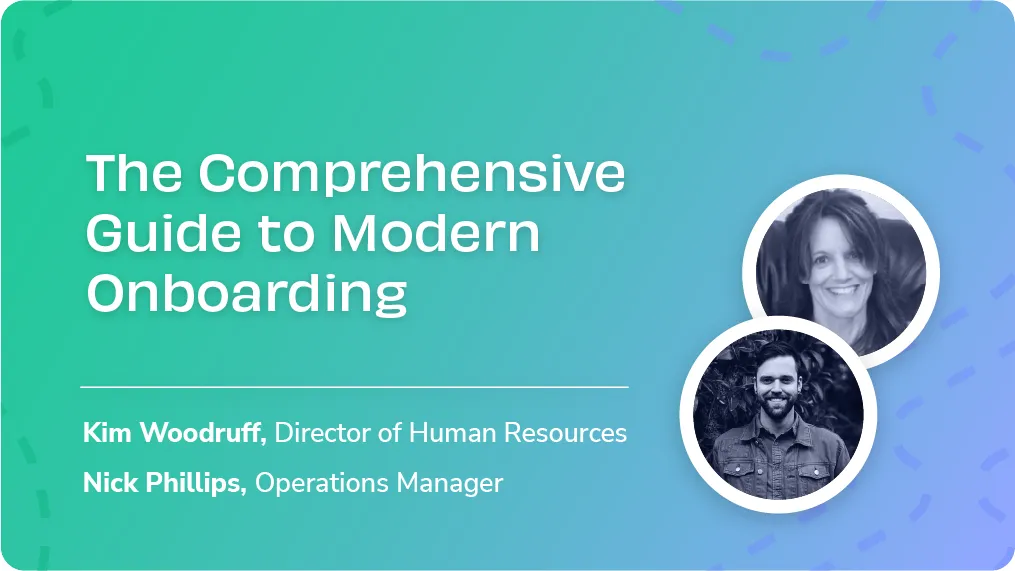Mindflash is now Learn, part of the new Trakstar Trifecta alongside Hire and Perform
Learn more about how the Trakstar platform is revolutionizing talent management through integrated, flexible solutions.

Learn more about how the Trakstar platform is revolutionizing talent management through integrated, flexible solutions.

— by Noel Diem
Course developmentElearningHuman resourcesLearning and developmentLearning developmentOnboardingWeb based trainingBuilding the best onboarding training curriculum is something that everyone needs to think about, though the work typically falls on the human resources department. The new hire experience is one of the essential processes to keep retention rates high.
Why?
A recent study found that 12% of employees were happy with their onboarding experiences after they got to do their jobs. Of course, we need to talk to new hires about their onboarding as soon as they finish, but what about after six months on the job? Or 8? By 12 months, it may be too late!
A great onboarding curriculum filled with training courses, meet and greets, and time to work can help employees feel connected to your workforce and result in real value for the organization through increased employee engagement, retention, and productivity.
When designing a new onboarding training curriculum, you must remember that a great onboarding experience starts before someone starts. Your onboarding should be a smooth transition from the candidate experience through your applicant tracking system or hiring process.
Onboarding begins the moment you send out the offer letter and includes the time between you hit send and get the signature back and their first official day on the job. Think about your offer letter and any follow-ups that you may send.
Get your new hire excited to work with you! Send out any relevant information they may need about getting equipment, where they need to go, calendar events they may already have, courses they will need to take, and more.
Once you officially offer them the position, every interaction is part of their onboarding curriculum.
New hires feel isolated and alone in a bad onboarding environment. They need to understand who is who within the organization. They need to learn how to talk to other teams and fit into the organization’s culture. Most employees feel like they don’t know the other people in their organization, particularly those outside their departments. Make sure that a part of your onboarding curriculum includes meet and greets with at least the leaders of the different departments in your organization.
Ideally, this should include the C-Suite and leaders of your company! They are busy and might not have a ton of space, but even having them record a video and send it over to the new hires is a great way for them to get some face time without interrupting the flow of work for your busiest employees.
One essential element of your onboarding curriculum needs to be a course or session about why you do your work. What helps your employees wake up in the morning and go to work? The American Psychological Association reports that employees who find meaning at work are more likely to be engaged with their day-to-day tasks. Of course, there are ways that human resources leaders and managers can improve engagement, but it has to start with someone enjoying what they do and finding meaning there – and it all starts with onboarding.
How can you do this? Run a course on your customers, clients, or the people you help! Show them the success stories that will keep them motivated.
For example, at Trakstar, we create talent development software. Our software changes the lives of HR leaders and their employees by bridging the gap between a company and potential hires, keeping them happy at work, providing them with tools for improvement, and quantifying their efforts. We make it easier to be good at your job and relieve some of that stress.
What is the purpose of the product you’re selling or the service you do? Your onboarding curriculum must not only answer that question, but reinforce it.

Onboarding should focus on two crucial things:
Often, we will build onboarding curriculums that focus on the first point but not so much on the second. The truth is that the two shake each other’s hands. When building your onboarding plan, you should first focus on giving your new employees the tools they need to be successful in their jobs in the shortest amount of time possible.
When employees feel capable of achieving their goals and great things, they are more likely to stay with the company. Good onboarding will show them where to go to get the tools they need to succeed and that you are willing to invest in them.
Above all, onboarding creates trust and bonds that are difficult to break. Even if two employees don’t really interact at work, the fact that they were onboarded together can create a bond that is unparalleled. They trust each other in a way that is hard to recreate. Organizations should use these bonds and encourage them.
Another thing to keep in mind is that a large percentage of employees don’t even last 90 days on a new job!
How do you wrap up onboarding? The transition from onboarding to being a full-time employee is a tough one. There’s a level of uncertainty that anyone will have and your job is to try to quell some of it. One of the final things your onboarding program should contain is a “what’s next” section. Meaning, what should the employee expect to do? You want to answer questions like:
Onboarding is meant to be a fun, welcoming experience, but it also needs to deliver returns. Having a thorough, structured, thought-out onboarding process is a great starting point, but you need to constantly evaluate your efforts and see what works and what doesn’t.
Ask new hires about their satisfaction, but go beyond that! Keep information about what courses they take and how their onboarding is set up, then compare it to how they perform in their jobs. Trakstar Insights can help you get most of the way there, and then you can make the changes you need to make – and keep what works.

What else should the HR department think about when they build or reformulate an onboarding curriculum? These items aren’t necessarily new-hire facing, but they factor into their overall experience.
Build an onboarding team! Most onboarding experiences will involve multiple people, from managers and coworkers to mentors and members of the C-Suite. Ensure that everyone you’d consider part of the “onboarding team” knows when someone is starting and their schedule for the first few days.
Beware of overload! A bad onboarding curriculum will throw too much information at your new hires too quickly. Be sure to build courses that are short enough to fit into smaller pockets of time where they can absorb what they are taught. For things like security or company policies, you may want to include quizzes or recaps so you can ensure they retain the most critical information.
Trakstar is one of the leading HR platforms that helps you make smarter decisions around your hiring, educating, engaging, and retaining your employees. With the help of Trakstar’s purpose-built training and onboarding software, you can welcome new employees into your workforce with ease.
We can help you hire better employees and automatically enroll them in onboarding courses. Even better, Insights for Trakstar Learn helps you to monitor the effectiveness of your employees and the training you create. When armed with this data, you can make the small but powerful changes you need to have an even better employee training program.
To learn more about Trakstar’s platform, including Trakstar Learn, you can schedule a personalized demo today.
Share this on
E-Learning Courses
Interactive Learning
Mobile Learning
Business Training
IT Training
Training Management
Agents & Advisors
Contractors
Customers
Franchise
Partners
Real Estate Brokers
Resellers
Employees
Leadership
Trakstar is a multi-product HR software provider helping organizations put the people back in people management. Develop and align your staff through better recruiting and applicant tracking, performance management, and learning management. For a more integrated solution to talent management, check out our website and request a live demonstration today.